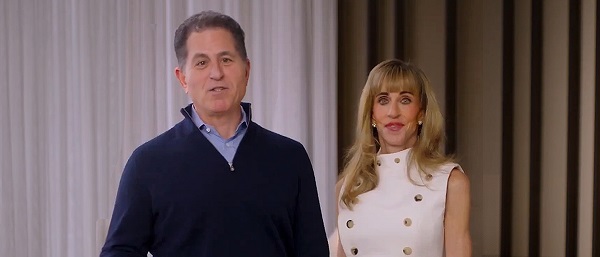Uncategorized
Allegations against Kavanaugh pose test for #MeToo movement

NEW YORK — Nearly a year old and still making headlines almost daily, the #MeToo movement faces a dramatic test of its impact and staying power in the sexual assault allegations against U.S. Supreme Court nominee Brett Kavanaugh.
Leaders of the movement suggest that Kavanaugh’s accuser, Christine Blasey Ford, might have never found the courage to come forward publicly about an alleged assault from her high school days without the examples set by women worldwide who’ve spoken out about past encounters with sexual assault and harassment.
“Time and time again, people have been inspired by the people who came before them,” said Fatima Goss Graves, president of the National Women’s Law Center. “They are willing to take on the risk of retaliation.”
Goss Graves is heartened by the fact that numerous senators of both parties say Ford deserves a chance to be heard on Capitol Hill — in itself, she said, an indication of the #MeToo movement’s staying power.
The movement exploded worldwide in October 2017, sparked by detailed allegations of sexual misconduct against Hollywood mogul Harvey Weinstein. Across the U.S., and in many foreign countries, it has toppled powerful men in a wide range of fields — entertainment, journalism, politics and high tech, among others. Celebrity chefs, TV hosts and members of Congress are among those who have lost their jobs.
Almost from the start, it also fueled a backlash among those who felt the movement sometimes led to excesses and injustice. Ford’s allegations have rekindled that resentment.
Conservative actor James Woods, in a subsequently deleted tweet, depicted hers accusations as one of numerous “#MeTooLynchings.” The Wall Street Journal ran an editorial Monday titled “The #MeToo Kavanaugh Ambush.”
“Letting an accusation that is this old, this unsubstantiated and this procedurally irregular defeat Mr. Kavanaugh would also mean weaponizing every sexual assault allegation no matter the evidence,” the editorial said. “It will tarnish the #MeToo cause with the smear of partisanship.”
Actor Sean Penn chimed in, suggesting it would be good for #MeToo “to just slow down.”
Even aside from the Ford-Kavanaugh showdown, this has been a tumultuous season for the #MeToo movement. Among the most recent developments:
—Two of the most powerful men in the U.S. television industry lost their jobs at least partly due to sexual misconduct allegations. Les Moonves stepped down as head of CBS Corp. and the network fired “60 Minutes” executive producer Jeff Fager. Both men have denied the accusations.
—A video of Harvey Weinstein aired on TV showing him propositioning a woman who later accused him of rape, repeatedly touching her and stroking her arm and back during what was supposed to have been a business meeting.
—”The Tonight Show”
—Comedian Bill Cosby is scheduled to be sentenced Sept. 24 on three felony sex assault charges. He was convicted in April of drugging and molesting a woman at his home in 2004, and faces up to 10 years in prison on each of three felony counts.
As these cases indicate, much of #MeToo’s high-profile impact has been in the entertainment and media world. Noreen Farrell, executive director of San Francisco-based Equal Rights Advocates, said more work is needed to persuade employers in other sectors to crack down on sexual misconduct.
“While we have seen some celebrity-level public shaming over serial harassers and enablers, employers seem to be digging in and resisting change,” said Farrell, noting that the business lobby in California has been fighting hard against proposed anti-harassment legislation.
Among the many women in politics who have embraced the #MeToo movement is Gayle Goldin, a Democratic state legislator in Rhode Island who has campaigned against sexual misconduct.
She said the Ford-Kavanaugh case will be an important indicator of how public attitudes have changed since 1991, when Anita Hill was treated dismissively by senators of both parties when she
Reflecting back to the 1990s, Goldin added, “The MeToo movement is not one moment in time, it is the culmination of pain by generations of women.”
“People are seeking justice, but that is not necessarily about the individual,” she said. “We are ultimately talking about culture change.”
David Crary, The Associated Press
Uncategorized
Cost of bureaucracy balloons 80 per cent in 10 years: Public Accounts

The cost of the bureaucracy increased by $6 billion last year, according to newly released numbers in Public Accounts disclosures. The Canadian Taxpayers Federation is calling on Prime Minister Mark Carney to immediately shrink the bureaucracy.
“The Public Accounts show the cost of the federal bureaucracy is out of control,” said Franco Terrazzano, CTF Federal Director. “Tinkering around the edges won’t cut it, Carney needs to take urgent action to shrink the bloated federal bureaucracy.”
The federal bureaucracy cost taxpayers $71.4 billion in 2024-25, according to the Public Accounts. The cost of the federal bureaucracy increased by $6 billion, or more than nine per cent, over the last year.
The federal bureaucracy cost taxpayers $39.6 billion in 2015-16, according to the Public Accounts. That means the cost of the federal bureaucracy increased 80 per cent over the last 10 years. The government added 99,000 extra bureaucrats between 2015-16 and 2024-25.
Half of Canadians say federal services have gotten worse since 2016, despite the massive increase in the federal bureaucracy, according to a Leger poll.
Not only has the size of the bureaucracy increased, the cost of consultants, contractors and outsourcing has increased as well. The government spent $23.1 billion on “professional and special services” last year, according to the Public Accounts. That’s an 11 per cent increase over the previous year. The government’s spending on professional and special services more than doubled since 2015-16.
“Taxpayers should not be paying way more for in-house government bureaucrats and way more for outside help,” Terrazzano said. “Mere promises to find minor savings in the federal bureaucracy won’t fix Canada’s finances.
“Taxpayers need Carney to take urgent action and significantly cut the number of bureaucrats now.”
Table: Cost of bureaucracy and professional and special services, Public Accounts
| Year | Bureaucracy | Professional and special services |
|
$71,369,677,000 |
$23,145,218,000 |
|
|
$65,326,643,000 |
$20,771,477,000 |
|
|
$56,467,851,000 |
$18,591,373,000 |
|
|
$60,676,243,000 |
$17,511,078,000 |
|
|
$52,984,272,000 |
$14,720,455,000 |
|
|
$46,349,166,000 |
$13,334,341,000 |
|
|
$46,131,628,000 |
$12,940,395,000 |
|
|
$45,262,821,000 |
$12,950,619,000 |
|
|
$38,909,594,000 |
$11,910,257,000 |
|
|
$39,616,656,000 |
$11,082,974,000 |
Uncategorized
Trump Admin Establishing Council To Make Buildings Beautiful Again


From the Daily Caller News Foundation
By Jason Hopkins
The Trump administration is creating a first-of-its-kind task force aimed at ushering in a new “Golden Age” of beautiful infrastructure across the U.S.
The Department of Transportation (DOT) will announce the establishment of the Beautifying Transportation Infrastructure Council (BTIC) on Thursday, the Daily Caller News Foundation exclusively learned. The BTIC seeks to advise Transportation Secretary Sean Duffy on design and policy ideas for key infrastructure projects, including highways, bridges and transit hubs.
“What happened to our country’s proud tradition of building great, big, beautiful things?” Duffy said in a statement shared with the DCNF. “It’s time the design for America’s latest infrastructure projects reflects our nation’s strength, pride, and promise.”
“We’re engaging the best and brightest minds in architectural design and engineering to make beautiful structures that move you and bring about a new Golden Age of Transportation,” Duffy continued.
Mini scoop – here is the DOT’s rollout of its Beautifying Transportation Infrastructure Council, which will be tasked with making our buildings beautiful again. pic.twitter.com/
9iV2xSxdJM — Jason Hopkins (@jasonhopkinsdc) October 23, 2025
The DOT is encouraging nominations of the country’s best architects, urban planners, artists and others to serve on the council, according to the department. While ensuring that efficiency and safety remain a top priority, the BTIC will provide guidance on projects that “enhance” public areas and develop aesthetic performance metrics.
The new council aligns with an executive order signed by President Donald Trump in August 2025 regarding infrastructure. The “Making Federal Architecture Beautiful Again” order calls for federal public buildings in the country to “respect regional architectural heritage” and aims to prevent federal construction projects from using modernist and brutalist architecture styles, instead returning to a classical style.
“The Founders, in line with great societies before them, attached great importance to Federal civic architecture,” Trump’s order stated. “They wanted America’s public buildings to inspire the American people and encourage civic virtue.”
“President George Washington and Secretary of State Thomas Jefferson consciously modeled the most important buildings in Washington, D.C., on the classical architecture of ancient Athens and Rome,” the order continued. “Because of their proven ability to meet these requirements, classical and traditional architecture are preferred modes of architectural design.”
The DOT invested millions in major infrastructure projects since Trump’s return to the White House. Duffy announced in August a $43 million transformation initiative of the New York Penn Station in New York City and in September unveiledmajor progress in the rehabilitation and modernization of Washington Union Station in Washington, D.C.
The BTIC will comprise up to 11 members who will serve two-year terms, with the chance to be reappointed, according to the DOT. The task force will meet biannually. The deadline for nominations will end Nov. 21.
-

 Focal Points2 days ago
Focal Points2 days agoPharma Bombshell: President Trump Orders Complete Childhood Vaccine Schedule Review
-

 Automotive1 day ago
Automotive1 day agoTrump Deals Biden’s EV Dreams A Death Blow
-

 Alberta2 days ago
Alberta2 days agoPremier Smith: Canadians support agreement between Alberta and Ottawa and the major economic opportunities it could unlock for the benefit of all
-

 Automotive1 day ago
Automotive1 day agoCanada’s EV Mandate Is Running On Empty
-

 Business18 hours ago
Business18 hours agoWhy Does Canada “Lead” the World in Funding Racist Indoctrination?
-

 Alberta2 days ago
Alberta2 days agoA Memorandum of Understanding that no Canadian can understand
-

 Censorship Industrial Complex2 days ago
Censorship Industrial Complex2 days agoFrances Widdowson’s Arrest Should Alarm Every Canadian
-

 Opinion1 day ago
Opinion1 day agoCountry music star Paul Brandt asks Parliament to toughen laws against child porn










